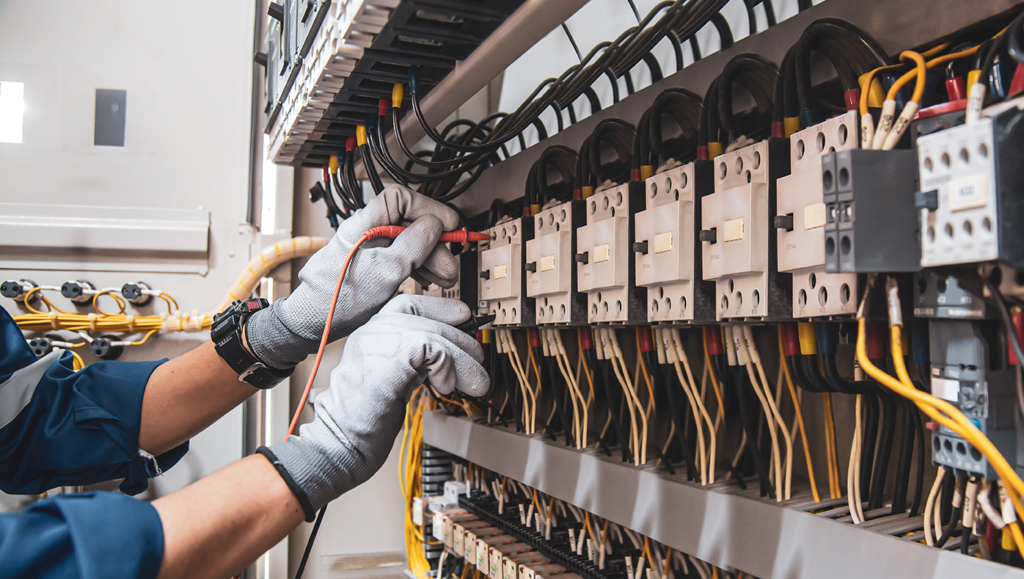A power supply, whether regulated or unregulated, is vital in electronic devices. Most of the world relies on having a power supply. Understanding the differences between a regulated or unregulated power supply can assist you in choosing a sensor from Automation Products Group, Inc. (APG), and we’ve put together a handy guide to get you started.
What Does Power Supply Mean?
In a general sense, a power supply is any device that supplies energy or power to an electrical circuit. Taken this way, batteries are power supplies for flashlights and power plants are power supplies for the electrical grid.
Power supply is also used to indicate a circuit or a device that adapts available power to the specific needs of one device or a set of similar devices. Alternating current (AC) and direct current (DC) affect the power supply. For most non-industrial settings, the available or input power is AC, while the output power is DC. A power supply receives power from an electrical outlet and converts the current from AC to DC.
Power supplies can be:
- Standalone units (like the “bricks” we plug into walls for laptops)
- Built-in units (like in refrigerators, microwaves, and TV’s)
- Hybrid units (like the built-in, self-contained power supplies used in desktop computers)
Each device needs a different amount of power to function. The power supply has to regulate the voltage and keep the device from overheating.
The power supply is the first place to receive electricity. Most are designed to handle electrical current fluctuations and still provide a regulated or consistent power output. Some power supplies include fuses that blow if the electricity surges too high as a way of protecting the equipment.
Power supplies are categorized in two ways: regulated vs. unregulated power supply. The difference between a regulated and unregulated power supply has to do with the voltage input and output needed for certain devices.
What Is A Regulated Power Supply?
Let’s start by defining a regulated power supply. Regulated power supplies have voltage regulators on their output. This means that the regulator ensures the output voltage always stays at the rated value of the power supply, regardless of the current that the device consumes. Any change in the input voltage won’t affect the output voltage because of the regulators.
This works as long as the device is not drawing more than the rated output current of the power supply. In fancy electrical terms, a regulated power supply provides a constant output voltage, independent of the output current. A regulated power supply with multiple regulators can offer multiple output voltages for operating different devices. Regulated power supplies maintain the voltage at the desired level and are ideal for many electronic devices because of the smooth, steady voltage supply they offer.
What Is An Unregulated Power Supply?
Next to define is an unregulated power supply. Unregulated power supplies are designed to produce a certain voltage at a particular current. That is, unregulated power supplies provide a constant amount of power (voltage x current). The output voltage decreases as the output current increases, and vice versa. An unregulated power supply should always be matched closely to the voltage and current requirements of the device it’s powering.
Unregulated power supplies don’t produce a clean, constant voltage like regulated power supplies do. Without a regulator to stabilize the output voltage, any change in input voltage is reflected on the output voltage. These small changes in the output voltage are called ripple voltage and are electrical noise. If the power supply and load requirements are closely matched, there’s no problem. However, if the ripple voltage is large enough in relation to the output voltage, it impacts the behavior of circuits and devices.
To reduce the impact of ripple voltage, a filter capacitor is placed across the power supply’s positive and negative outputs. The capacitor resists changes to voltage and acts like a regulator, smoothing the output voltage and allowing for normal operation.
Regulated vs. Unregulated Power Supply: Which Should You Choose?
So which is the better choice? It depends on the situation. Unregulated power supplies are less expensive, but can only supply power as clean as the available input power. For powering equipment with sensitive electronics, clean power is an absolute requirement. An unregulated power supply can be used if it’s matched closely to the voltage and current requirements of the device, allowing it to run smoothly.
For a power supply offering multiple DC output voltages, one regulated power supply with multiple outputs is a better option than multiple supplies with single outputs. Regulated power supplies are also more common and easily found, since it’s easier to make regulated, inexpensive power supplies. For sensitive devices, a regulated power supply ensures that the device receives the correct voltage amount no matter the input.
If you’re unsure what type of power supply you’re using for your sensor, contact us today! We’ll help you determine if you’re using a regulated or unregulated power supply and what type of sensor is the best choice for your needs.
WRITTEN BY

Sami T.
Sami Thompson is APG’s Marketing Technical Writer and has been with the company since 2022. With a master’s degree in English from Utah State University and a 40-page thesis publication under her belt, Sami has a demonstrated strong writing background. In her free time, Sami enjoys reading and birdwatching.


